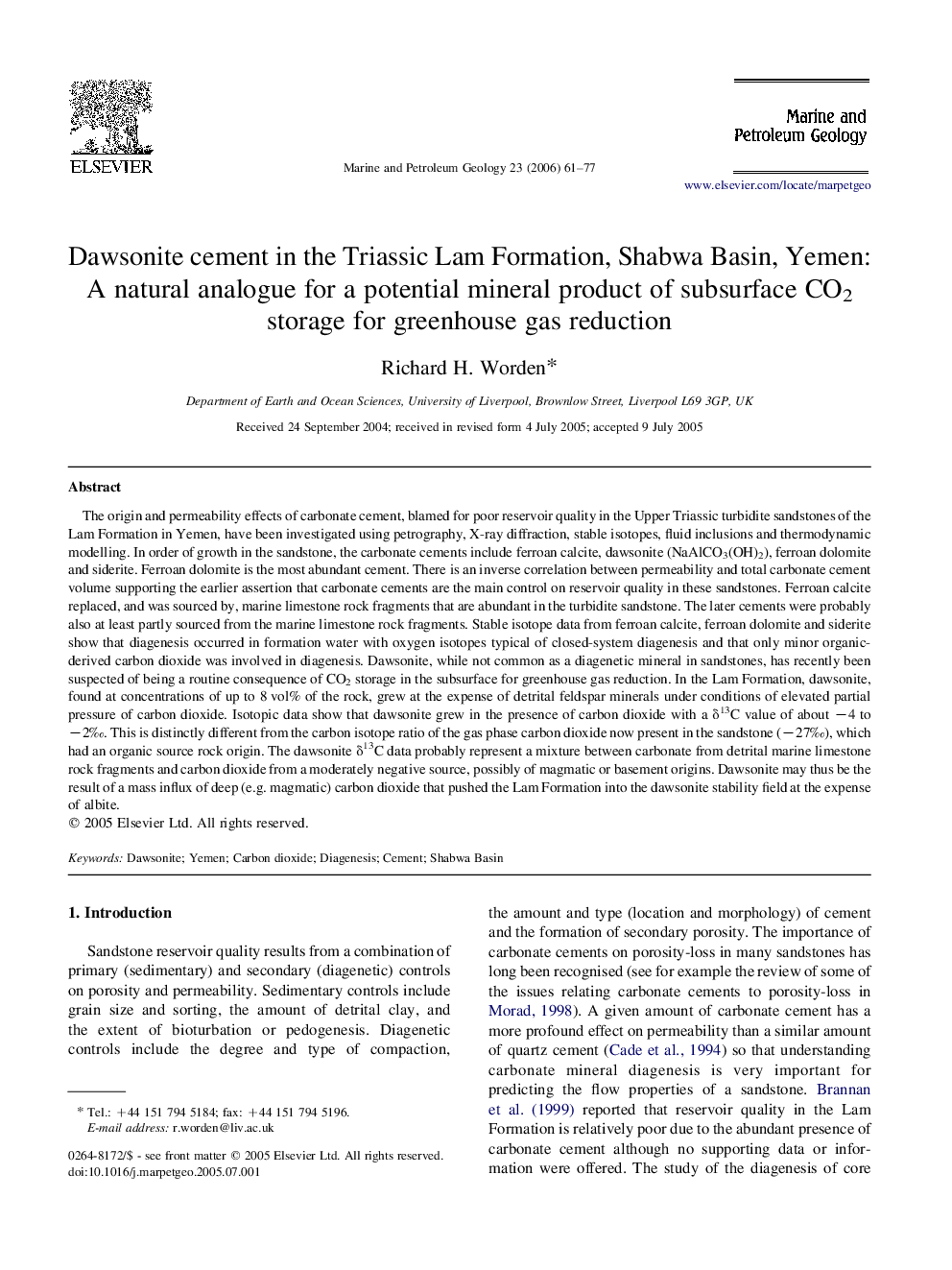| کد مقاله | کد نشریه | سال انتشار | مقاله انگلیسی | نسخه تمام متن |
|---|---|---|---|---|
| 4696770 | 1351726 | 2006 | 17 صفحه PDF | دانلود رایگان |

The origin and permeability effects of carbonate cement, blamed for poor reservoir quality in the Upper Triassic turbidite sandstones of the Lam Formation in Yemen, have been investigated using petrography, X-ray diffraction, stable isotopes, fluid inclusions and thermodynamic modelling. In order of growth in the sandstone, the carbonate cements include ferroan calcite, dawsonite (NaAlCO3(OH)2), ferroan dolomite and siderite. Ferroan dolomite is the most abundant cement. There is an inverse correlation between permeability and total carbonate cement volume supporting the earlier assertion that carbonate cements are the main control on reservoir quality in these sandstones. Ferroan calcite replaced, and was sourced by, marine limestone rock fragments that are abundant in the turbidite sandstone. The later cements were probably also at least partly sourced from the marine limestone rock fragments. Stable isotope data from ferroan calcite, ferroan dolomite and siderite show that diagenesis occurred in formation water with oxygen isotopes typical of closed-system diagenesis and that only minor organic-derived carbon dioxide was involved in diagenesis. Dawsonite, while not common as a diagenetic mineral in sandstones, has recently been suspected of being a routine consequence of CO2 storage in the subsurface for greenhouse gas reduction. In the Lam Formation, dawsonite, found at concentrations of up to 8 vol% of the rock, grew at the expense of detrital feldspar minerals under conditions of elevated partial pressure of carbon dioxide. Isotopic data show that dawsonite grew in the presence of carbon dioxide with a δ13C value of about −4 to −2‰. This is distinctly different from the carbon isotope ratio of the gas phase carbon dioxide now present in the sandstone (−27‰), which had an organic source rock origin. The dawsonite δ13C data probably represent a mixture between carbonate from detrital marine limestone rock fragments and carbon dioxide from a moderately negative source, possibly of magmatic or basement origins. Dawsonite may thus be the result of a mass influx of deep (e.g. magmatic) carbon dioxide that pushed the Lam Formation into the dawsonite stability field at the expense of albite.
Journal: Marine and Petroleum Geology - Volume 23, Issue 1, January 2006, Pages 61–77